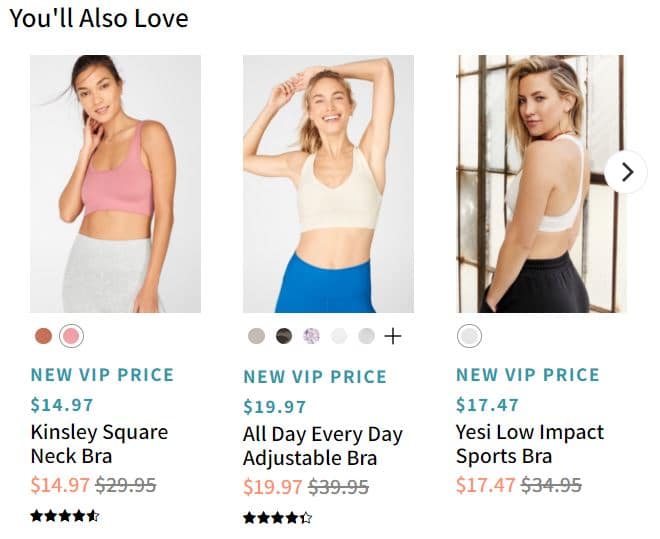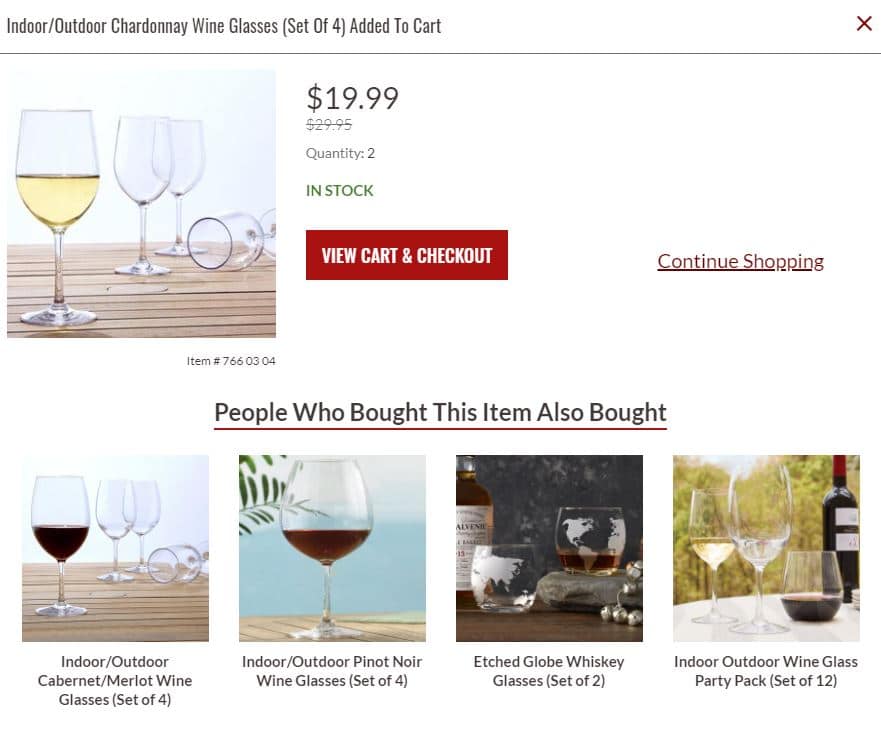There are two main approaches an ecommerce business can take to increase revenue… and we bet you can guess what they are. The first is reaching more customers. While this strategy is great in theory, it’s expensive and arduous in practice. The second approach is getting your existing customers to spend more money. With the right strategies and tools, boosting customer spend can be immensely effective, affordable, and simple. Step one? Start cross-selling and upselling products.
Stick with us to 1) discover the difference between cross-selling and upselling and 2) learn the cross-selling and upselling techniques that you can apply to your ecommerce store.
Cross-sell vs. upsell: What’s the difference?
First things first: let’s clear up any confusion over these often erroneously interchanged phrases.
Cross-selling is suggesting additional products that complement the item being purchased. For example, if a shopper is looking for a wedding gown, you may cross-sell them a pair of shoes that would go well with the dress. Or, if a customer is shopping for a laptop, you might cross-sell them compatible accessories like a laptop case or portable mouse.
Cross-selling isn’t just a way to generate more revenue. It’s a form of anticipating shoppers’ needs and providing them with top notch customer service. Showing customers matching accessories makes their shopping experience easier.
Upselling products means suggesting alternative, similar items at a higher price point. For example, if a customer is looking at a $100 coat, you may recommend coats in similar styles that are slightly more expensive to get them to spend more with you.
Upselling strategies for ecommerce stores
As you know, the basic principle behind upselling is suggesting more costly versions of items the shopper is looking for. Below you can see how a customer looking for sports bras from Fabletics will also be shown other sports bras at higher price points.

Follow these four upselling strategies to ensure you are providing relevant and helpful suggestions to your shoppers.
1. Be cost conscious
There’s more finesse to upselling than just pushing expensive products on customers. Retailers need to be conscientious with their upselling strategies to avoid recommending items that are out of the shopper’s budget.
If a customer searches “washing machines under $500” on your website, you’d be remiss to advertise $3,000 washer-dryer combos as recommended products. Take advantage of rules to hide irrelevant – and out of budget – items to gently nudge shoppers towards the upsell.
2. Upsell on product pages
Just like location is critical in the world of real estate, placement is critical in the world of online shopping. Where you place your upselling recommendations can make a world of difference.
Show recommended products on product pages, so that when someone clicks to learn more about a product they like, they’ll also see related – but pricier – items too. Make sure to place the recommended products below the featured product so they’re easy to find without being obtrusive.

See how customers looking at WineEnthusiast.com’s Vintage Factory Bar Cart are shown more expensive options further down the product page.
3. Leverage your cart and checkout page
You can increase your chances of upselling success by also showing recommended products on your cart or checkout page. Below you can see how WineEnthusiast.com recommends alternative wine glass sets at varying prices when shoppers add a set to their cart.

4. Choose your upselling words carefully
Using the right language can help you make the upsell.
You can see in the photo above that a “Continue Shopping” call to action (CTA) is featured on the cart page to subtly convince customers that there’s still more to shop for.
Experiment with phrases like “you may also like,” “we think you should check out,” “you may have missed,” or “customers also bought” throughout your online store.




